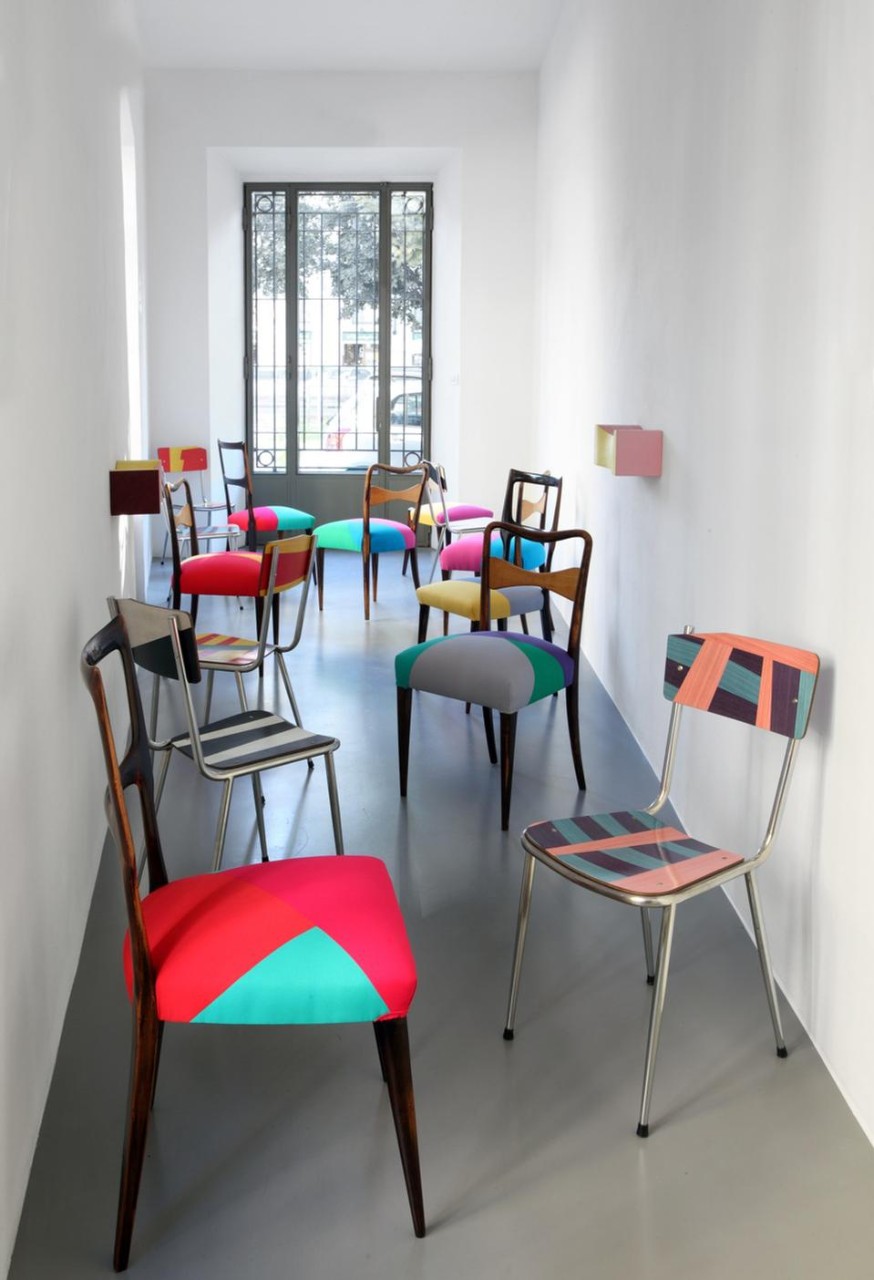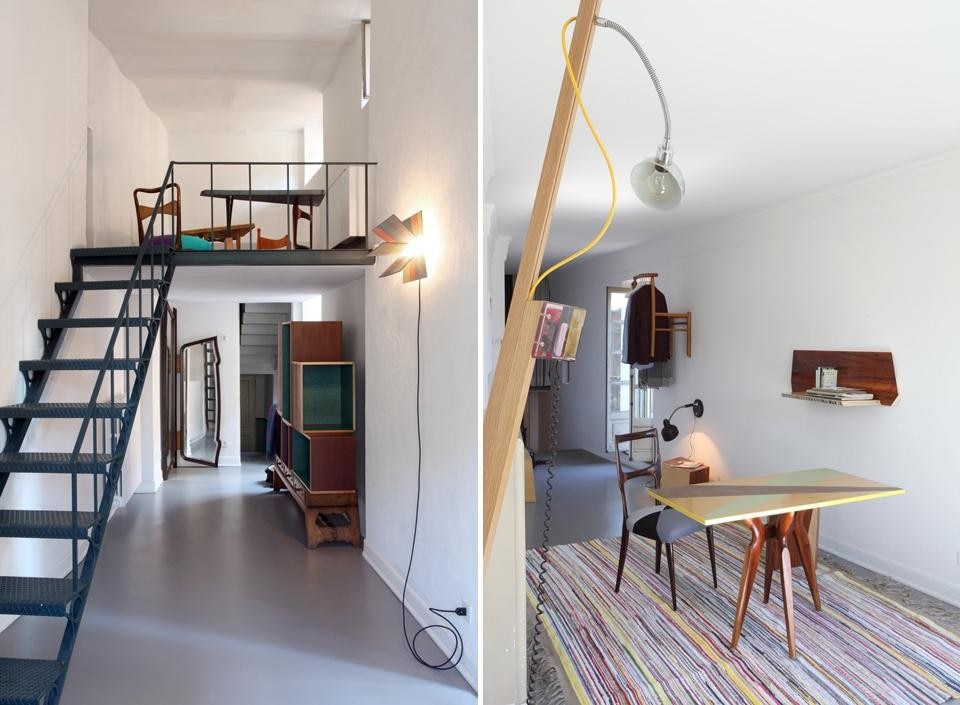Gamper stayed in Turin for more than a month, his only request a small bed that he placed on the top floor of the Fetta. Then, he started exploring the city and its objects, starting from that room as he tried to get a feel of its proportions and gauge the size of the works for this exhibition in relation to that 'slice' of the city with such a special history and geometry. After arriving in Turin, Gamper started searching for, selecting and collecting second-hand furniture: sideboards, tables, cupboards and bedside-tables in the materials and shapes that distinguished the domestic interiors of a certain Piedmontese middle-class between the 1950s and 1970s. The odd piece of handmade furniture, post-war Italian kitchen tables—with metal legs and coloured Formica tops—painted and polished wooden cupboards that, when sliced through, reveal a lightweight section of compressed cardboard between two layers of laminate.

The fragments, corners and details of the city and its feel seem to have been gathered here in the condominium in the form, geometry and colour of the new and unique pieces composed by Martino Gamper.
Francesco Garutti



